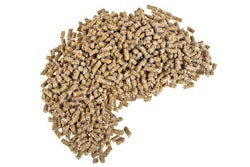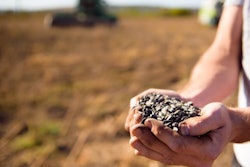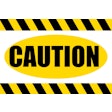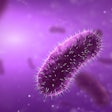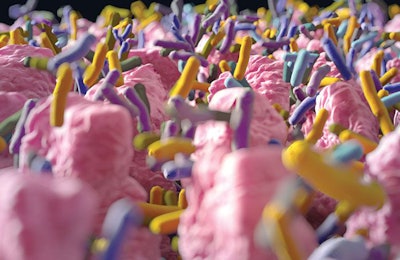
Chris Chavis, vice president of Animal Nutrition and Health Performance Solutions at DSM, discusses the animal microbiome and new insights into this topic.
What’s new in microbiome research? [PODCAST] (07:03)
Ann Reus: Hello and welcome to the Feed Strategy podcast. I’m your host, Feed Strategy senior reporter Ann Reus.
Chris Chavis is vice president of Animal Nutrition and Health Performance Solutions at DSM. I recently spoke with her about the gut microbiome and the role gut health plays in antibiotic-free production, as well as new discoveries in this area. We also discussed how the economy and supply chain are affecting the animal protein industry.
Hi, Chris, thanks for joining me on the podcast.
Chris Chavis: It’s a pleasure to be here, Ann.
Reus: There has been more talk about the animal microbiome recently. Can you explain what the microbiome is and some of the breakthroughs that have been seen in that area?
Chavis: So the microbiome is a very fascinating area of research – in its infancy, in not only animals, but humans as well. Microbiome, being an organ in about itself – at least that’s how we’re thinking about it – is this collection of micro-organisms within our intestinal system that interact with us, their host, in terms of how do we have resilience and how do we respond to different stimuli, how do we respond to the different nutrients in our system, and so that collection of microorganisms plays a very important role in our overall health and well-being.
Reus: What are some signs of a healthy microbiome vs. an unhealthy one?
Chavis: Well, I think the unhealthy ones are a little bit easier to recognize, especially if you’ve got early weaning diarrhea, or any of those obvious signs. And this is where I think the interesting parts of the research are so, there’s so much opportunity here, because right now we’re learning how different nutrients and how different additives can influence that microbiome to perhaps produce a different metabolite that will enable a population to be more resilient in the face of diseases or to respond better to different environmental stressors like heat stress, for example. And so overall, we’re learning more around what your healthy microbiome looks like – in people to, by the way – and there’s a lot to understand. But right now, we measure that through traditional metrics, like feed efficiency, overall health, productivity, and welfare.
Reus: What kinds of feed additives are being used to improve the gut microbiome and how do they work?
Chavis: Yeah, the classic ones would be your prebiotics, your probiotics and then, of course, postbiotics. And so some, some scientists call it the weeding, seeding and feeding, which I kind of like because it’s super catchy there in terms of weeding out the bad bacteria, seeding good bacteria, with your with your probiotics, and of course, feeding the bacteria with your postbiotics and where fiber can play a very important role. But this area of influencing the microbiome would encompass many more products that are coming onto the market today. We are embarking on some new research in some areas called precision glycans. And precision glycans is a new area of a microbiome modulator that we’re researching. And it’s really cool to see how these products can then influence, not necessarily the number of bacteria that are there, but rather what they do and how they interact with the host.
Reus: Are you seeing a difference in gut health in antibiotic-free production systems when compared with conventional feeding systems?
Chavis: Yeah, for sure. And I still would contend we’re early in the journey here. And so, as systems move away from antibiotics, there’s an adjustment period we’re seeing. And so, with antibiotics we’re killing all the bacteria in the in the animal, so the good and the bad in the in the tract. And so as we’re moving to antibiotic free, we’re looking to support the animal through the microbiome and how they’re building resilience. And right now, trying to figure out what’s the right combination of products that can support the microbiome, that we can then support the health or the resilience for the welfare of the animal in a way that would have replicated results before in an ABF system. So there’s a lot of research that’s ongoing in this area and I think the real magic will be in finding the right combinations of products with a diet component to ensure that we get the same level of productivity and efficiency in those conventional systems.
Reus: How will the current economic environment affect the protein industry and sustainability?
Chavis: Well, the current environment is pretty tough from a cost perspective, right? So you’ve got higher prices on feed than we’ve had in a long time and profitability has been tough and it varies a little bit by species. And so when we think about the protein industry, controlling your feed costs is the name of the game, or has been the name of the game this year in terms of how can we get more nutrients out of the ingredients that we have, and also ensuring that there’s good quality grains coming in. As climate continues to change, we see more mycotoxins prevalent in some of the grains and so this will be an ongoing concern and I believe a growing concern going forward. Feed costs will be probably the No. 1 concern on producers’ minds for the near future, especially as we don’t anticipate those feed costs coming down anytime in the next couple of years.
Reus: How will supply chain issues and vulnerabilities affect the industry’s ability to meet the food demand and the increasing global population?
Chavis: Well, one thing that we learned through the pandemic is how important it is to have short supply chains and some resilience and some alternatives, as well. So I think you will see more of an appetite for alternative grains as well. And you’ll have more of an appetite, no pun intended, for different feedstuffs to be able to serve as a backup in the event that you have supply chain challenges. And, of course, we’ve already seen some substitutions that are happening due to the situation with Russia and Ukraine. And this will be this will be ongoing – in the end, when nutritionists will look for ways to feed the animals all the nutrients they need in the lowest cost possible and the way they can do that. You know, there’s many different feedstuffs they can utilize. But again, it all comes down to cost and that being the No. 1 thing they need to optimize.
Reus: All right. Well, thank you again, Chris, for joining me today.
Chavis: Thank you for having me, Ann. Much appreciated.
Reus: And thank you to the audience for tuning in. I’m Ann Reus for Feed Strategy.



